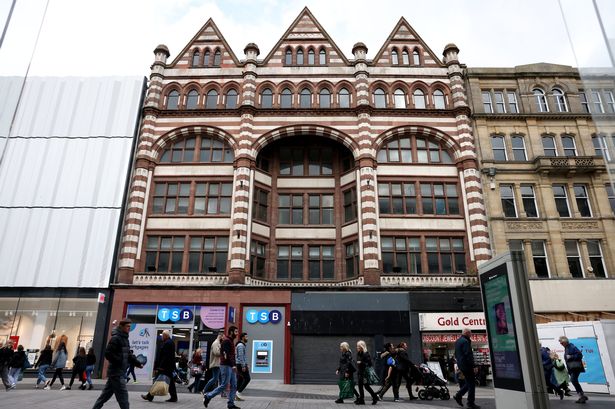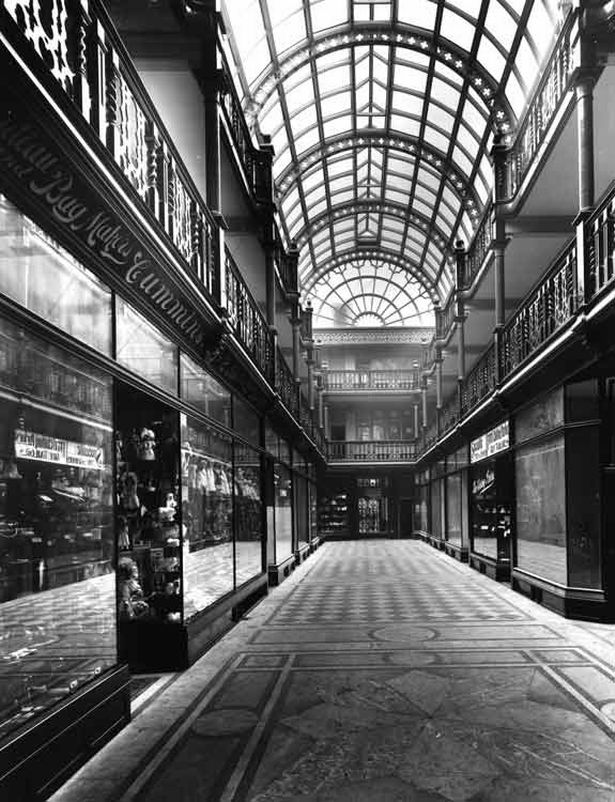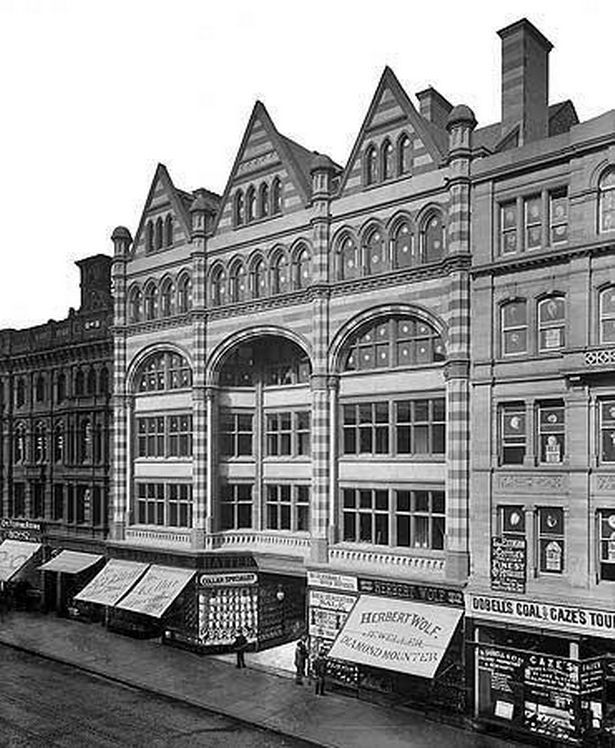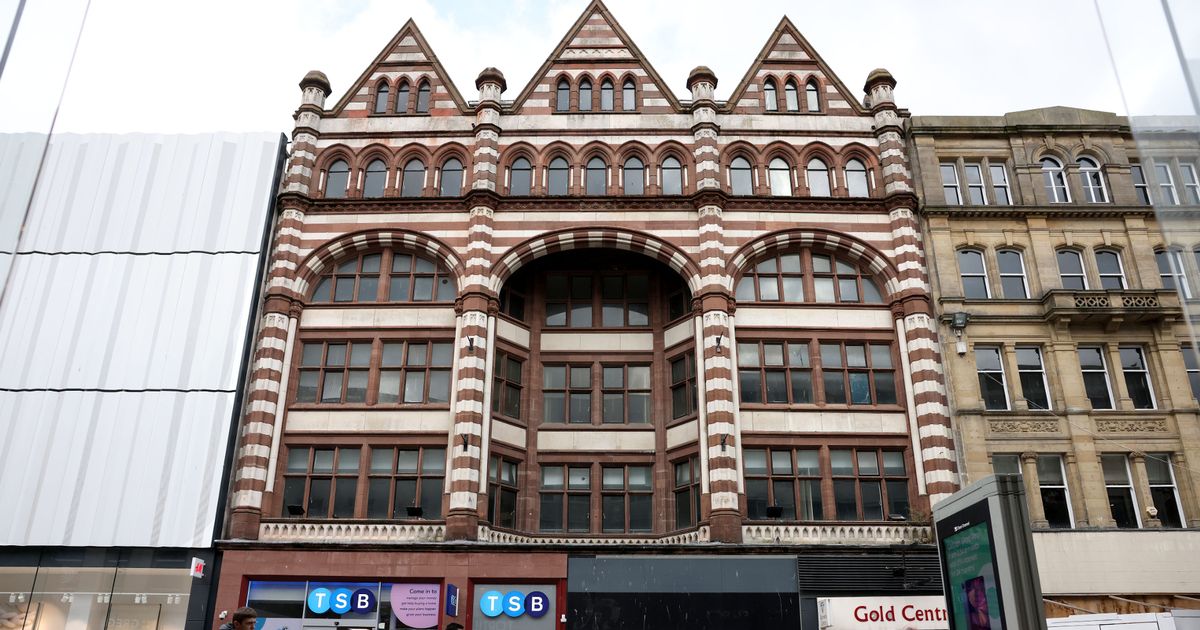Photos show inside the old Victorian shopping mall in its heyday The Lord St Arcade building in Liverpool city centre(Image: Liverpool Echo)
The Lord St Arcade building in Liverpool city centre(Image: Liverpool Echo)
This red and white brick building in Liverpool city centre is passed by thousands of people – many of whom will not even notice its impressively grand exterior, situated as it is above TSB Bank and the closed-down Gold Centre. Its striking façade harks back to days gone by, when the building was home to a shopping arcade.
The old Victorian shopping mall on Lord Street has been closed to the public for years. Photos from the ECHO’s archive show inside the lost mall in all its splendour, with a domed ceiling and rows of shops.
The mall’s unique frontage, with three giant arches and pointed gables, was the vision of architect Walter Aubrey Thomas, who went on to design the Royal Liver Building.
In 1935, it underwent significant changes as the ground floor of the grand Victorian shopping mall was completely reconstructed to accommodate a British Home Stores (BHS). In what now seems like an unforgiveable act of sacrilege, an article in the Liverpool ECHO in December 1935 documents the building’s renovation.
 The large glass ceiling of Lord Street Arcade in Liverpool, designed to flood the shops with natural light(Image: Dan Longman)
The large glass ceiling of Lord Street Arcade in Liverpool, designed to flood the shops with natural light(Image: Dan Longman)
It describes hundreds of people “going about their daily duties” in the three storeys above as major construction on the building was completed below.
It read: “The old Lord-street Arcade, which has seen so many changes of fortune and which has been a city landmark for generations, has now disappeared, and in its place have appeared the extensive premises of the British Home Stores. Ltd., which will form the largest of this firm’s many branches throughout the kingdom.
“How the old Arcade and its double line of shops, its open daylit space and its large basement, were converted into one composite store of two doors forms a story which provides a tribute to modern constructional engineering.
“Walls and supports were cut away piece by piece, hundreds of tons of debris being removed, and simultaneously shorings were erected in their place on an intricate system of cantilever-age.”
It narrowly missed annihilation during the blitz in World War II as buildings nearby were reduced to rubble, and was later awarded Grade II listed status by Historic England in 1975.
 The original form of Lord Street Arcade in Liverpool(Image: Dan Longman)
The original form of Lord Street Arcade in Liverpool(Image: Dan Longman)
For many years, the old arcade was also known as ‘The Penny in The Pound Building’ with the Merseyside Hospitals Council being tenants from at least 1936 through to the 1970s. In the late 1980s, there were plans to reopen the arcade allowing shoppers to walk directly through from Mathew Street as Lord Street, Paradise Street and Whitechapel became pedestrianised.
A story in the Liverpool Echo in October 1986 documented the proposed plans that sadly never came to fruition.
It read: “[The] Lord Street arcade which dates back to Victorian times and is hidden away in the Penny In The Pound Building. We want to open that up so there is a through route to the Mathew Street area from Lord Street. The scheme will be linked into British Home Stores. It is a fantastic arcade, but I wonder how many people know it is there?”
Today, the building is owned by Mason Owen properties. Staff of the TSB Bank on the ground floor have no access to the upper floors, where the arcade once flourished. Despite enquiries made by the ECHO in the past, what remains of the magnificent old arcade behind the façade is unknown.
